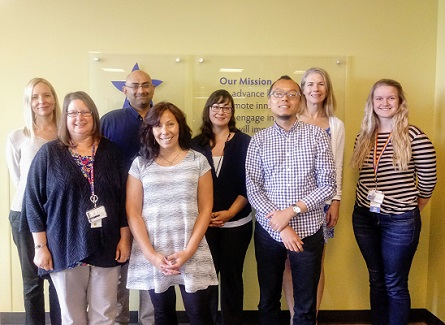Hepatitis C Project
Advanced Prediction Models to Optimize Treatment and Access for Veterans with Hepatitis C
 |
Team Members: Akbar Waljee, MD, MSc (PI) Rod Hayward, MD Sameer Saini, MD, MS Grace Su, MD Maria Hughes, MPT Amanda Ellis, BS Pia Roman, MA Tony Van, MA Wyndy Wiitala, PhD Elizabeth Slomski, BSW Funding: 4/1/2017 – 3/31/2021 Partners: VA National Program for Gastroenterology; VA Pharmacy Benefits Management; VA National Hepatitis C Program |
Background: Chronic hepatitis C (CHC) is a major public health problem that currently afflicts over 250,000 Veterans. The Food and Drug Administration (FDA) recently approved several direct acting antiviral agents (DAAs) for the treatment of CHC. DAAs are highly effective, have a favorable safety profile, and are well tolerated, eliciting significant consumer demand. However, DAAs are also extremely costly, making it difficult for healthcare systems to meet this growing demand from patients. Healthcare systems also lack a sufficient number of trained providers to treat all patients with CHC within a short time, further limiting access. But immediate treatment of all infected patients may be not only prohibitively expensive – it is also unnecessary.
We recently demonstrated the feasibility of using a machine-learning (ML) based risk prediction model to predict disease progression and clinical outcomes at 1-,3- and 5-years in patients with advanced liver disease. The use of a risk prediction model to prioritize CHC treatment (“risk-based treatment”) has the potential to distinguish patients whose disease will progress slowly over years to decades (low-risk patients) from patients at high risk whose diseases will progress more rapidly and, therefore, could benefit from immediate treatment.
Objectives: The purpose of this study is to lay the groundwork for risk-based treatment of CHC among non-cirrhotic Veterans in the Veterans Health Administration (VHA) by accomplishing three aims. Aim 1: Adapt, validate, and refine ML-based models of disease progression in Veterans with non-cirrhotic CHC using real-world data drawn from the VHA electronic health record (EHR). Aim 2: Use deliberative democratic methods to engage Veterans, to elicit their value-based preferences regarding risk-based treatment of CHC and to develop consensus around treatment approaches. Aim 3: Compare the effects of risk-based treatment versus current treatment on clinical outcomes and access to care in VHA using simulation modeling.



















